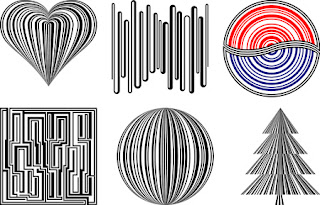Lauren Bon was born in Los Angeles, California in 1963. Lauren has a bachelors and a masters degree in architecture. In 2005, Lauren Bon created her most important project called "Not a Cornfield". The project " Not a Cornfield" is a 32 acre of land between Chinatown and Lincoln Heights. Lauren Bon has also created Farmlab. Farmlab is committed to the preservation of living things. Farmlab was born out of Not a Cornfield and the South Central Farm. Last Friday, I got the opportunity to go to Farmlab to experience and see everything myself.
The South Central Farm was there between 1992 and 2006. It was a 13 acre community garden. It was an urban farm and community garden. The south central farm was considered the largest urban farms in the United States. However, the South Central Farm started facing money problems, so Lauren Bon worked behind the scenes to come up with a sustainable solution to the immediate South Central crisis.
In 2006, the Annenberg Foundation decided to move the remaining trees off the South Central Farm to Farmlab in order to save the trees as the developer clears the land upon the Farm operated. Farmlab has helped keep living plants, and everything is due to Lauren Bon. Lauren Bon goal is to keep nature alive and not let the earth destroy all the living trees, plants, flowers, and seeds.

Lauren Bon has created at Farmlab four Junker Gardens. These transformed vehicles combined automobiles with agriculture in order to produce contemporary sculptures. In these vehicles, they grow vegetables, herbs and flowers in the engine cavities, cabs, flatbeds, and trunks of scrapped rides. Fountains and fish sometimes appear. This Mercedes Benz car was exhibited at Santa Monica Museum of Art in 2008. Farmlab has also created more cars as if you went to farmlab, you can see the newest car by the entrance. When I went to Farmlab there was only one car by the entrance as you can see in the picture on the bottom. I think this is a very creative way of preserving live. However, I couldnt take pictures of me with the car because I went by myself and no one was there to take me a picture.
The northern side of the state park is called Conherenge. This anabolic sculpture was created in 2006 by Bon and was made from a combination of Not A Cornfield bales, native seeds, water, natural process and some human tending. Has you can see, these are the most recent pictures of the Northern side of the park. This was the most fascinating view at farmlab because for me it had two views. One view was Los Angeles City, but the other view was the view of the plants and flowers.
One of Farmlab projects involves collecting run off water from industrial warehouse roofs, cleaning it, and then using the water various urban interventions. The picture on the top shows a bag full of water being conserved from the rain. One of the ladies incharge of farm land explained to me that they have this big containers where the water fall down too, they cleaned it and then they use it wisely to fresh the plants and trees from farmland.
Lauren Bon also uses solar energy to give sun energy to the plants. As you can see in the picture in the top, Bon has this blue solar energy that reflects sun energy back to the plants.
Strawberry Flag Project
Lauren Bon and Jonathan Sherin have created a project at the Greater Los Angeles Veterans Administration Health Care Center. The purpose of this project is to fundraise, the project has created a raised strawberry field in the shape of the American Flag. Veterans tend the strawberries, transplanted from abandomed fields, and sell preserves they make from second harvest fruit.The purpose of this project is to promote recovery and reintegration for the veterans. It also is helping revitalize a campus that housed recovering Civil War soldiers and now serves the more than 500,000 veterans in the Los Angeles area.
The flag is about the size of a football field, holds red-berried plants growing in rows of raised white pipes in a ground coconut mixture. Reclaimed trees and other plants outline the flag's blue upper left corner, creating an open-air teahouse, where visitors can sit and drink tea, relax or meditate. Bon says that this sculpture is to promote resources that support patriotism. This project was created in June 26, 2010.
(This is a video that talks about the The Strawberry Flag Project.)
This are Lauren Bon two most important projects she has created all her life. Lauren Bon Bon created Farmlab to preserve all living things and keeping them from dissapearing from the planet. Lauren Bon is inspiring because it not only inspires us to care for nature but to take actions to preserve plants. Going to farmlab was a great experience because I realize that there is people that care about the preservation of living nature.


























